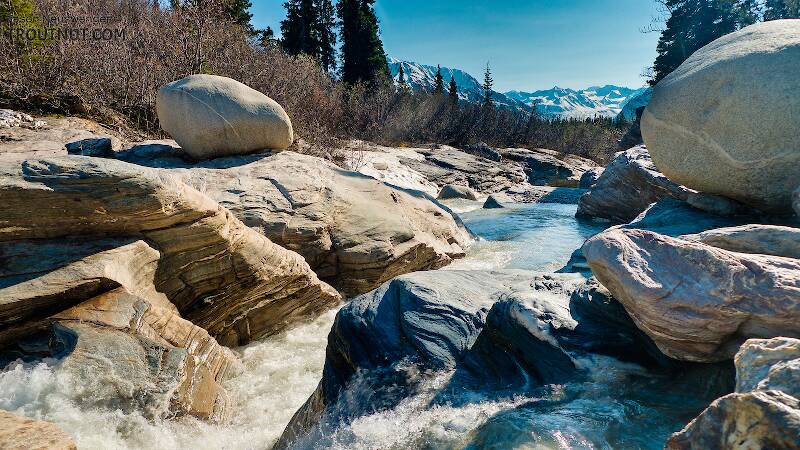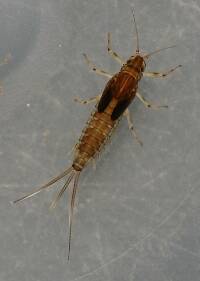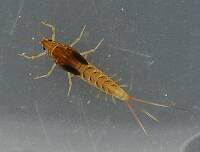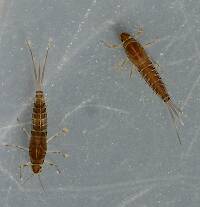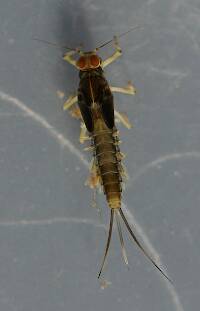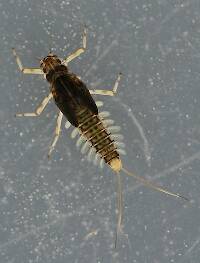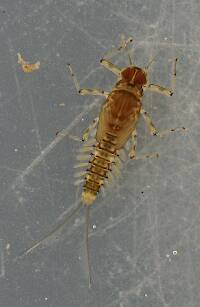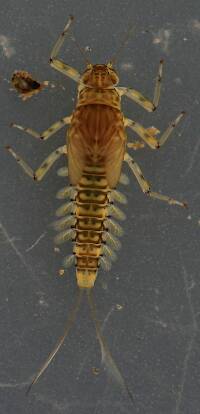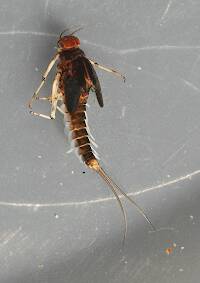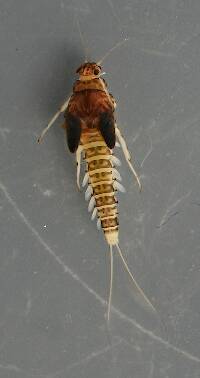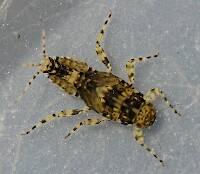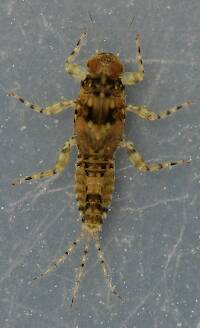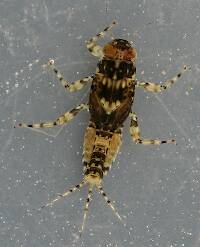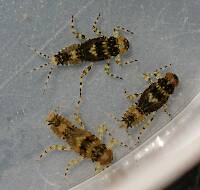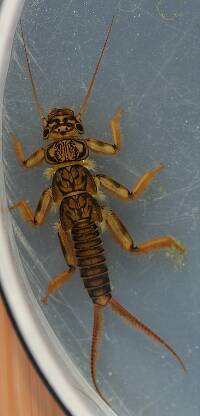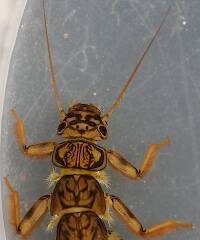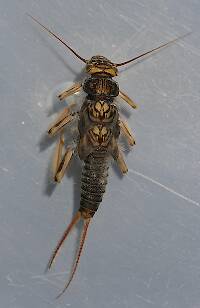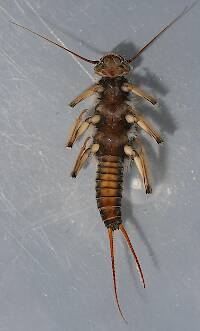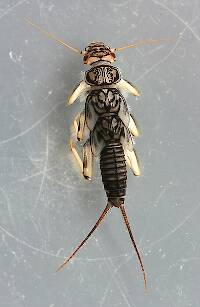
Hex Mayflies
Hexagenia limbata
The famous nocturnal Hex hatch of the Midwest (and a few other lucky locations) stirs to the surface mythically large brown trout that only touch streamers for the rest of the year.
Featured on the forum

It's only barely visible in one of my pictures, but I confirmed under the microscope that this one has a prosternal horn and the antennae are mid-way between the eyes and front of the head capsule.
I'm calling this one Pycnopsyche, but it's a bit perplexing. It seems to key definitively to at least Couplet 8 of the Key to Genera of Limnephilidae Larvae. That narrows it down to three genera, and the case seems wrong for the other two. The case looks right for Pycnopsyche, and it fits one of the key characteristics: "Abdominal sternum II without chloride epithelium and abdominal segment IX with only single seta on each side of dorsal sclerite." However, the characteristic "metanotal sa1 sclerites not fused, although often contiguous" does not seem to fit well. Those sclerites sure look fused to me, although I can make out a thin groove in the touching halves in the anterior half under the microscope. Perhaps this is a regional variation.
The only species of Pycnopsyche documented in Washington state is Pycnopsyche guttifera, and the colors and markings around the head of this specimen seem to match very well a specimen of that species from Massachusetts on Bugguide. So I am placing it in that species for now.
Whatever species this is, I photographed another specimen of seemingly the same species from the same spot a couple months later.
I'm calling this one Pycnopsyche, but it's a bit perplexing. It seems to key definitively to at least Couplet 8 of the Key to Genera of Limnephilidae Larvae. That narrows it down to three genera, and the case seems wrong for the other two. The case looks right for Pycnopsyche, and it fits one of the key characteristics: "Abdominal sternum II without chloride epithelium and abdominal segment IX with only single seta on each side of dorsal sclerite." However, the characteristic "metanotal sa1 sclerites not fused, although often contiguous" does not seem to fit well. Those sclerites sure look fused to me, although I can make out a thin groove in the touching halves in the anterior half under the microscope. Perhaps this is a regional variation.
The only species of Pycnopsyche documented in Washington state is Pycnopsyche guttifera, and the colors and markings around the head of this specimen seem to match very well a specimen of that species from Massachusetts on Bugguide. So I am placing it in that species for now.
Whatever species this is, I photographed another specimen of seemingly the same species from the same spot a couple months later.

Troutnut is a project started in 2003 by salmonid ecologist Jason "Troutnut" Neuswanger to help anglers and
fly tyers unabashedly embrace the entomological side of the sport. Learn more about Troutnut or
support the project for an enhanced experience here.

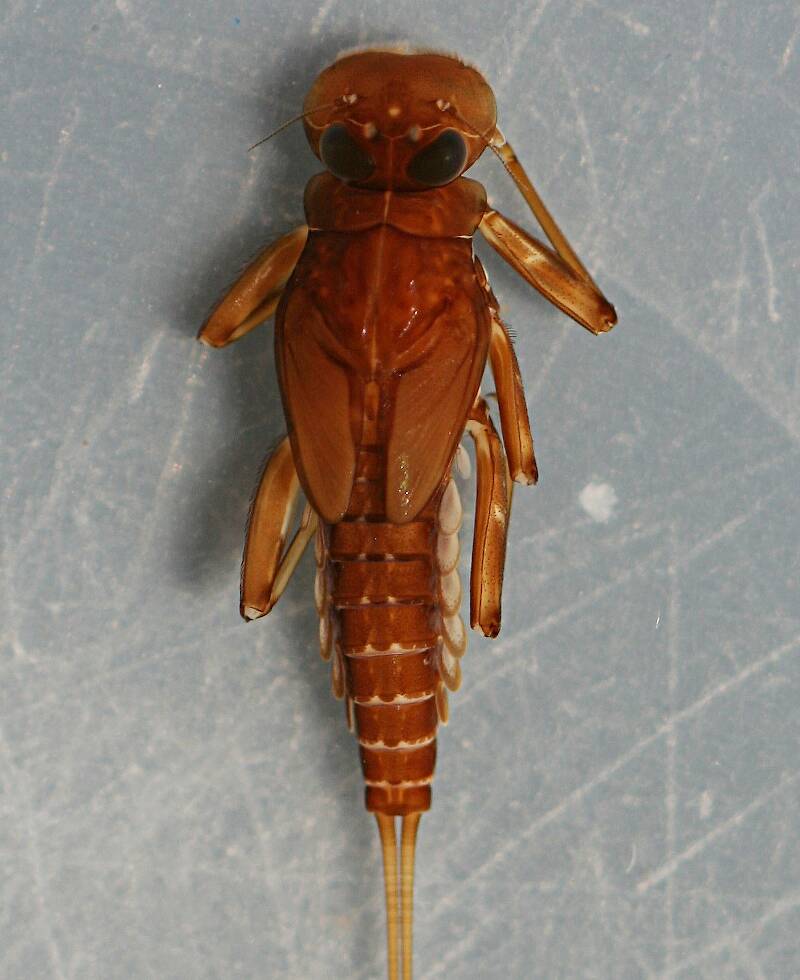

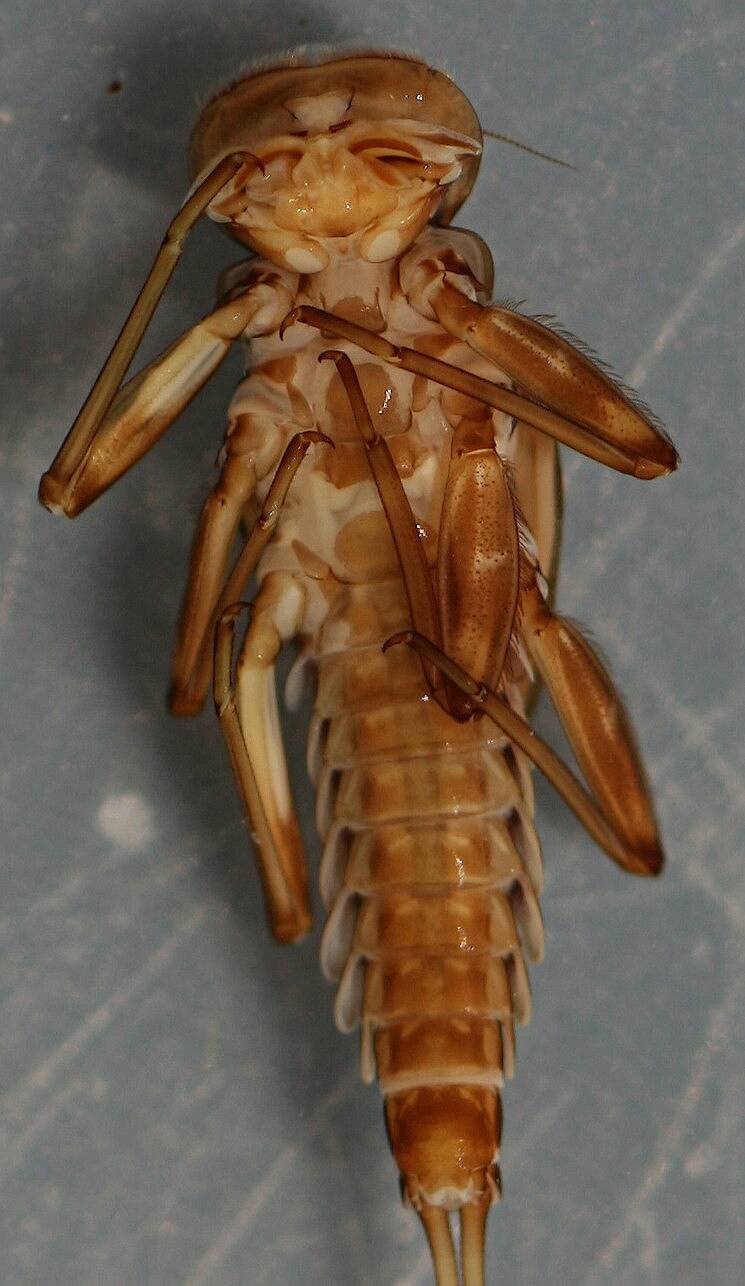
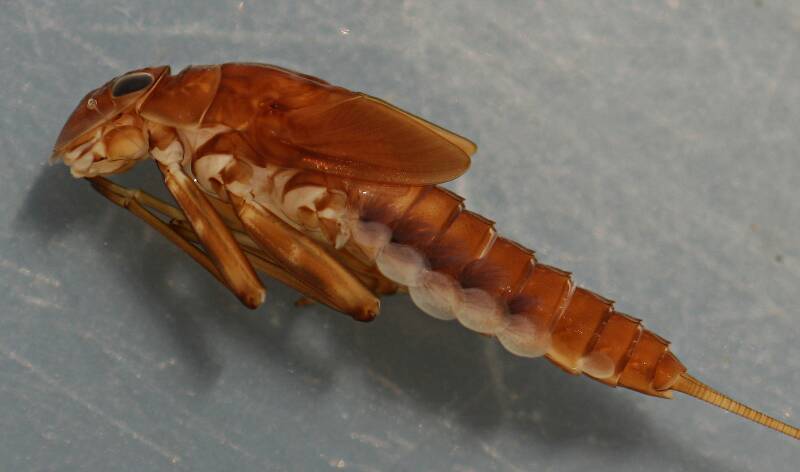
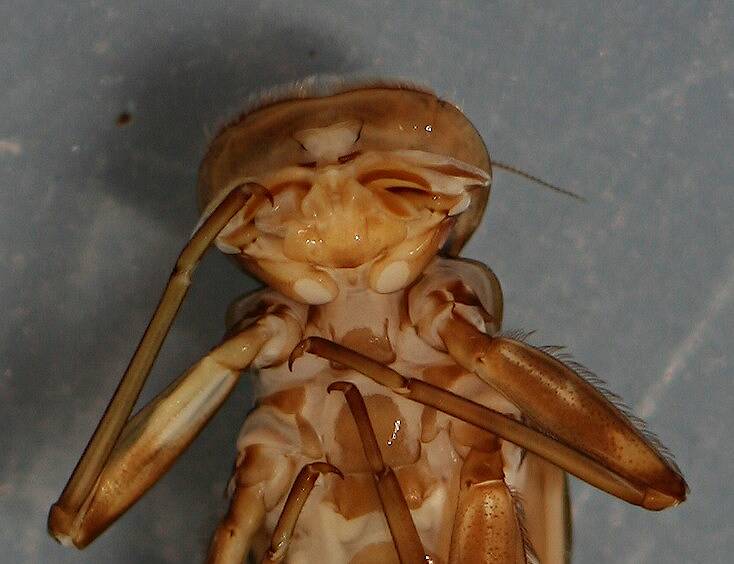
Millcreek on Nov 17, 2014November 17th, 2014, 3:10 pm EST
The nymphs are members of the Heptageniidae family and are easily identified to genus. They have only two caudal filaments (tails), which narrows it down to Anepeorus, Epeorus and Ironodes. Anepeorus has interfacing setae on the caudal filaments. Ironodes has no interfacing setae on the caudal filaments . Ironodes has a pair of median tubercles on each dorsal segment while Epeorus doesn't.
While easy enough to identify to genus I've only been able to find a description of Ironodes lepidus by Day in "New Species and Notes on California Mayflies (Ephemeroptera)" (1952). This leaves several species undescribed as nymphs that have been reported as occurring in California. I. californicus and I. nitidus have been reported in California and Mayfly Central lists I. arctus and I. geminatus as possibilities in the northwest United States. If anybody has any knowledge of these larvae info would be much appreciated.
The nymphs are usually found in smaller tributaries of the Russian River.They were collected in riffles or shallow glides with moderate to fast flow and a substrate of large gravel and cobble. They are most common in the spring and and early summer months. When ready to emerge they can be seen on the downstream side of large rocks where they crawl up nearly to the waterline, grasp the rock firmly and molt as subimagos. I had some male adults but never got around to keying them out and haven't been able to find the vial with them in it again.
While easy enough to identify to genus I've only been able to find a description of Ironodes lepidus by Day in "New Species and Notes on California Mayflies (Ephemeroptera)" (1952). This leaves several species undescribed as nymphs that have been reported as occurring in California. I. californicus and I. nitidus have been reported in California and Mayfly Central lists I. arctus and I. geminatus as possibilities in the northwest United States. If anybody has any knowledge of these larvae info would be much appreciated.
The nymphs are usually found in smaller tributaries of the Russian River.They were collected in riffles or shallow glides with moderate to fast flow and a substrate of large gravel and cobble. They are most common in the spring and and early summer months. When ready to emerge they can be seen on the downstream side of large rocks where they crawl up nearly to the waterline, grasp the rock firmly and molt as subimagos. I had some male adults but never got around to keying them out and haven't been able to find the vial with them in it again.
"If we knew what it was we were doing, it would not be called research, would it?"
-Albert Einstein
-Albert Einstein
Konchu on Nov 21, 2014November 21st, 2014, 1:58 pm EST
Jacobus & McCafferty (2002) suggested some color characteristics that might
be useful for species diagnosis, but such characters often are variable or
subject to fading. Leave these at the genus level.
Jacobus LM; McCafferty WP. 2002. Analysis of some historically unfamiliar
Canadian mayflies (Ephemeroptera). Canadian-Entomologist
134(2):141-155.
be useful for species diagnosis, but such characters often are variable or
subject to fading. Leave these at the genus level.
Jacobus LM; McCafferty WP. 2002. Analysis of some historically unfamiliar
Canadian mayflies (Ephemeroptera). Canadian-Entomologist
134(2):141-155.
Millcreek on Nov 21, 2014November 21st, 2014, 2:32 pm EST
I figured I wasn't going to get very far attempting to ID these to species. Day gives some minor differences in size and coloration as distinguishing characteristics in "Aquatic Insects of California" but as you mentioned above these seem like they would be variable. Thanks for the info.
Mark
Mark
"If we knew what it was we were doing, it would not be called research, would it?"
-Albert Einstein
-Albert Einstein
Quick Reply
Related Discussions
Topic
Replies
Last Reply
2
Oct 26, 2008
by Troutnut
by Troutnut
1
Jan 29, 2016
by Martinlf
by Martinlf
2
Feb 6, 2017
by Crepuscular
by Crepuscular

